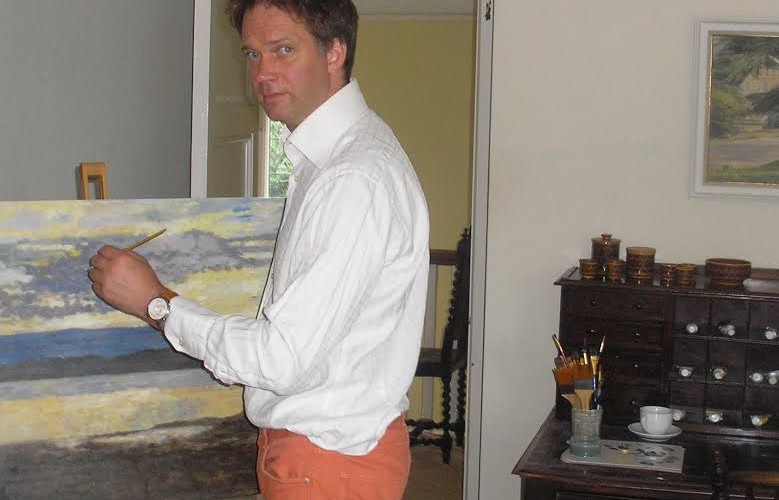Inside the Studio
 William Oxer
William Oxer
Favorite material to work with?
In my twenties I preferred oils, and I still work in oils for my large scale abstract works, but these days I predominantly use acrylic paint because of the vivacity of colour and quick drying time. It’s a great medium, as I work quickly and then I can come back to it and adjust my work, in time, to make it just so.
How many years as an artist?
Well, I’ve been drawing (on walls) since I was a baby. Hardly frescos then, but still, a start. As a schoolchild of six I remember complaining about the crayons we were given to draw with because I couldn’t get enough detail in my pictures. I would much rather have felt-tipped pens!
I started doing what I considered to be serious painting—large scale works in oils—when I was around 15, following the style of the Viennese Secessionists, which interested me, in part, due to its rather morbid and slightly perverse nature.
What was the best advice given to you as an artist?
“Give up the day job.”
Prefer to work with music or in silence?
Either. Both my ex-wife and current girlfriend are professional violinists, and I find being surrounded by music, particularly classical music, can be a great accompaniment to painting. As can silence.
What’s around the corner from your place?
My local pub. And the lovely Budleigh beach.
What do you collect?
18th century furniture, innumerable books, and, apparently, violinists.
Art school or self-taught?
Self taught.
Where can we find you outside the studio?
My local pub. But seriously, a large number of my private commissions are from people I meet in relaxed local environments, such as the pub. It’s a good place to network and often leads to further commissions and exhibitions. For example, in the last week I have picked up commissions for owners of racehorses, yachts and large country houses, just by being sociable. It’s not an easy mix. Studio or socialise? It all works out in the end.
If you couldn’t be an artist, what would you do?
I’ve had a great many different jobs including interior design for large country houses, banking, and even working in the electrical industry, but I’ve always painted. Ultimately I wouldn’t do anything but be an artist.
Favorite contemporary artist?
Years ago when I was visiting my in-laws in Stroud, Gloucestershire, I used to drive past Damien Hirst’s enormous warehouse every day, and I remember thinking his work was perplexing, to say the least. Now I think he is a man of ideas; his art is hugely clever; and more than that I admire his business acumen.
If you could only have one piece of art in your life, what would it be?
A friend of mine in Dorset claims to have an original Modigliani. It would either be a work by Modigliani or a sculpture by Giacometti, simply because of their aquiline style.
Who are your favorite writers?
My degree was in English Literature at Warwick University; I own about 3,000 books and frankly can’t decide. In my early twenties I was very much taken by the rather obscure works of John Cowper Powys, of which I have many first editions.
Use anything other than paint?
Yes. I’ve always used pencil for preliminary drawings. As a teenager I used to draw very detailed works in pencil, which even now I’m rather proud of.
Is painting dead?
It’s very much alive. I feel there is a re-ignition of interest in the spirit of traditional skills. I think over the last 20 years there has been a growing fascination in works which attempt to redefine art in ways which are determined to shock, but the desire to own a work of art in paint is something that is actually having a renaissance.
Monet or Manet?
I find Manet rather old fashioned, whereas Monet’s work is far looser and has an audacity, like that of Turner, whose works I got to know when I was involved with hanging the exhibition at Petworth House in 1996. I believe Manet is freedom of expression. Monet is freedom of speech.













